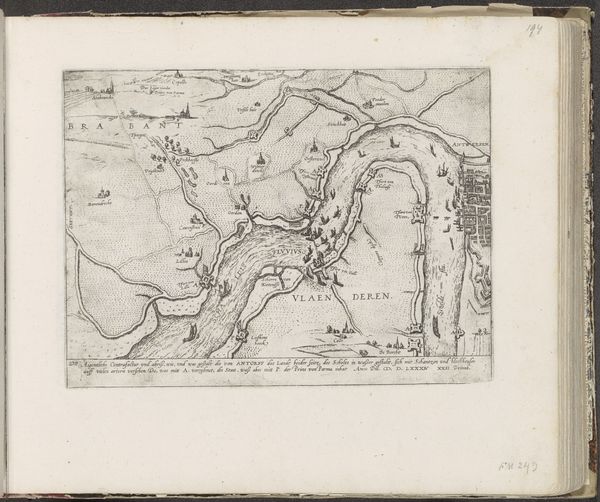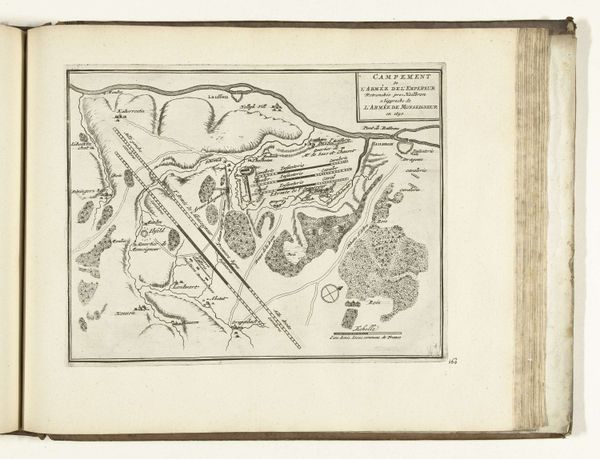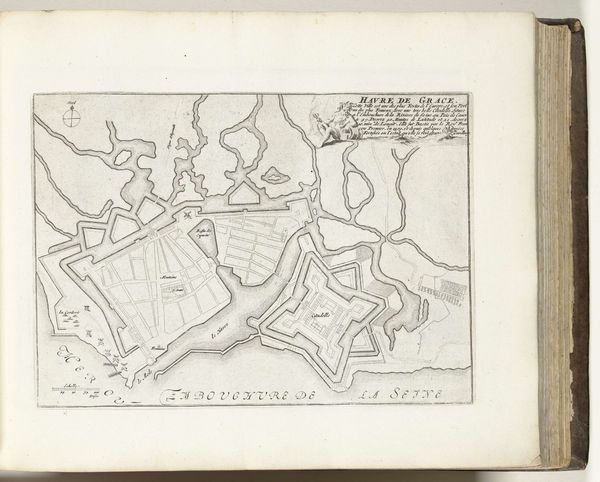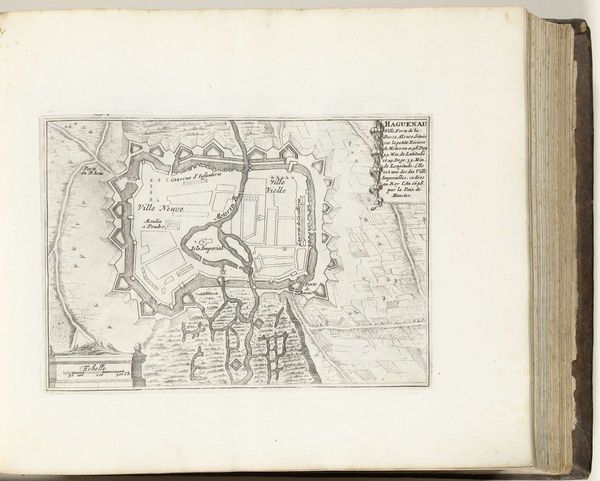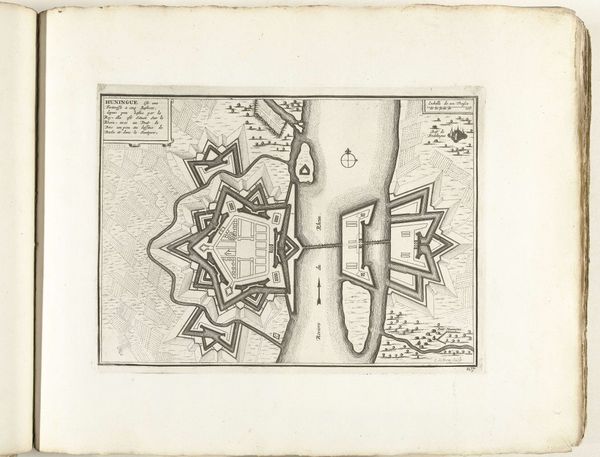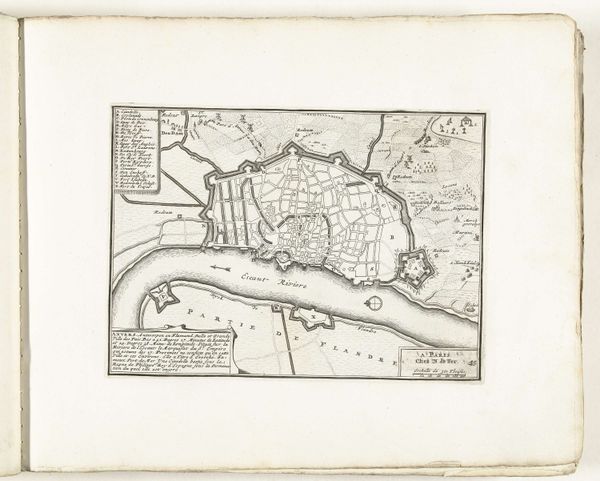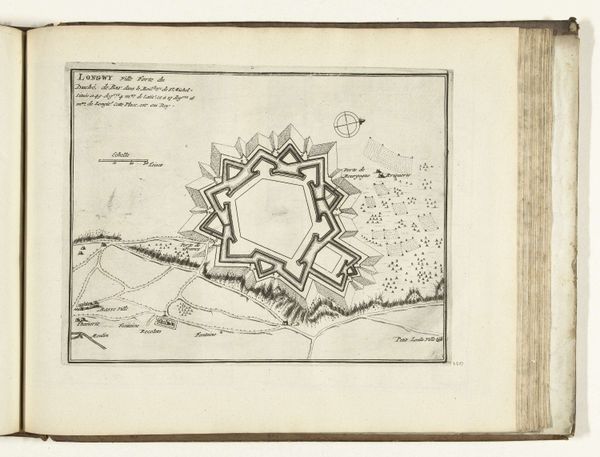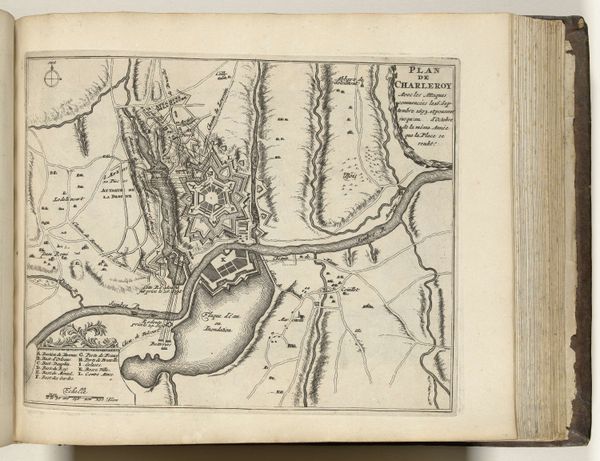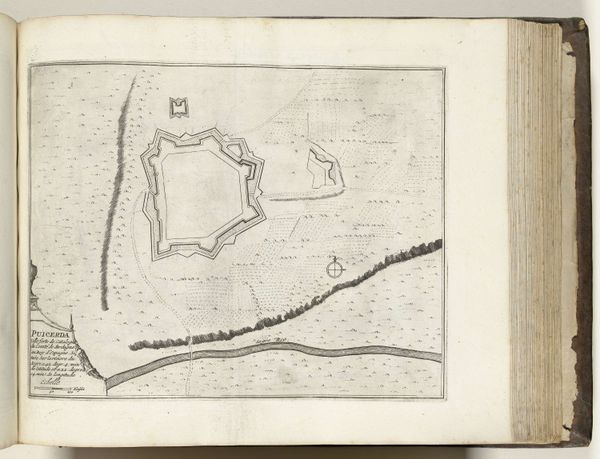
drawing, print, paper, ink, engraving
#
drawing
#
baroque
# print
#
landscape
#
paper
#
ink
#
cityscape
#
engraving
Dimensions: height 379 mm, width 480 mm
Copyright: Rijks Museum: Open Domain
Editor: Here we have an intriguing map, "Plattegrond van Oudenaarde, 1708," dating from 1708-1729, held in the Rijksmuseum and created by an anonymous artist. It’s an ink and engraving print on paper. I'm immediately struck by the geometric shapes that structure the town. How would you approach analyzing this piece from a formalist perspective? Curator: The allure of this "Plattegrond" lies precisely in those geometrical constructs. Observe how the fortifications—those star-shaped ramparts—dominate the composition. They are not merely representational; they dictate the visual rhythm and balance of the image. Consider the semiotic function of the lines: their precise arrangement conveys order and control. What effect does the rendering style of the landscape have? Editor: The rendering style is interesting - it's very stylized. Are you suggesting that this interplay between geometric order and stylized representation speaks to something beyond its function as a simple map? Curator: Precisely. The stark contrast emphasizes the imposition of human intellect, a rational grid, onto the natural landscape. The medium—engraving—lends itself to clean, unwavering lines, reinforcing the sense of imposed order. Note how the different tones delineate depth and create a sense of space within this two-dimensional work. Consider also the philosophical implications; to what extent does this image represent an aspiration for control and mastery? Editor: I hadn't thought about it that way! Focusing on the lines, shapes, and contrast truly unlocks new ways of interpreting the map's deeper meaning. It reveals the tension between natural and artificial order! Curator: Indeed. A close formal reading often unearths complexities and nuances often obscured by focusing solely on historical context. Do you find your appreciation for the piece has altered? Editor: Absolutely. I can now appreciate how every line and form in the piece serves to communicate those larger themes of power, order, and control in early 18th century cartography!
Comments
No comments
Be the first to comment and join the conversation on the ultimate creative platform.
